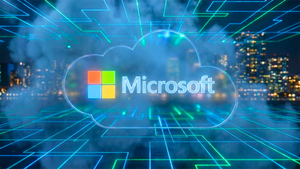 Photo from Unsplash
Photo from Unsplash
Originally Posted On: https://www.concretecms.com/about/blog/devops/flush-dns
In the dynamic world of the internet, websites frequently change their IP addresses for various reasons. While this is a standard part of web maintenance, it can lead to connectivity issues. This is where the concept of ‘Flush DNS’ comes into play, an essential troubleshooting step for anyone facing website access problems.
Understanding DNS
Before exploring DNS flushing, it’s crucial to understand DNS (Domain Name System). DNS is the phonebook of the internet, translating human-friendly domain names into IP addresses that computers understand. When you visit a website, your computer performs a DNS lookup to find its IP address.
The DNS Cache
Your device maintains a DNS cache, a temporary database storing all recent visits and attempted visits to websites and other domains. This cache is used to speed up the loading time by not having to perform a DNS lookup each time.
What Does Flushing the DNS Do?
Ever tried to call a friend but dialed the old number? That’s kind of what happens when a website changes its IP address but your device clings to the outdated one in its DNS cache. Flushing the DNS is like updating your contact list, ensuring you’re reaching out to the right address.
Why Flush DNS?
- Updated Information: Websites may change their IP addresses. Your DNS cache might have the old address, leading to errors when accessing the site. Flushing the DNS updates this information.
- Corrupted Cache: Occasionally, the cache may get corrupted due to technical glitches or malware, causing DNS errors.
- Privacy Reasons: The DNS cache can reveal your browsing history, which might be a privacy concern for some users.
How to Flush DNS
Windows
- Open Command Prompt as an administrator.
- Type ipconfig /flushdns and press Enter.
- You’ll see a message confirming the DNS cache has been flushed.
macOS
- Open Terminal.
- Type sudo killall -HUP mDNSResponder and press Enter.
- Enter your password when prompted.
Linux
- Open Terminal.
- Depending on your distribution, type sudo systemd-resolve –flush-caches or sudo /etc/init.d/nscd restart.
- Enter your password if prompted.
When to Flush DNS
- When you can’t access a website, but others can.
- After changing DNS settings on your device or network.
- If you suspect your cache has been corrupted.
- After you launch a new website.
How Do I Clear My DNS Cache?
Clearing your DNS cache is essentially the same as flushing it. You’re wiping the slate clean of old, potentially incorrect IP addresses. The steps mentioned above are your go-to methods for a fresh start.
How Often Should You Flush DNS?
There’s no one-size-fits-all answer here. It’s like asking how often you should clean your house. Some do it weekly; others wait until the in-laws announce a visit. Flush DNS as needed—when you’re facing connectivity issues, or after changing DNS settings, for example.
Does Flushing DNS Speed Up Internet?
While flushing DNS can resolve specific connectivity issues, it’s not a magical internet speed booster. Think of it as removing a roadblock rather than adding a turbo engine to your browsing.
Is It Safe to Flush DNS?
Flushing the DNS cache is considered a safe and effective measure for resolving internet connectivity issues. This procedure is akin to routine maintenance for your network settings, devoid of adverse effects on system performance or security. It serves as a critical step in ensuring that your device can accurately and efficiently connect to websites by updating outdated or incorrect IP address records. Consequently, it is a recommended practice for troubleshooting access problems, with negligible risk to users or their data.
Conclusion
Flushing DNS is a straightforward yet potent method for resolving many internet connectivity issues. It’s a safe procedure and can often be the initial step in troubleshooting network problems. Regular flushing of your DNS cache can also be a prudent practice for maintaining privacy and security online. Additionally, understanding the broader context of website connectivity issues can be immensely helpful. For more insights into common causes of website downtime and troubleshooting methods, consider exploring this detailed guide on “Common Reasons for Website Downtime.”
Remember, while DNS flushing can solve certain connectivity issues, it’s not a cure-all for every network problem. If difficulties persist post a DNS flush, you might need to delve deeper into device settings, router configurations, or reach out to your ISP.
Stay informed and adept in using essential tools like DNS flushing to ensure you remain connected and secure in the digital realm





